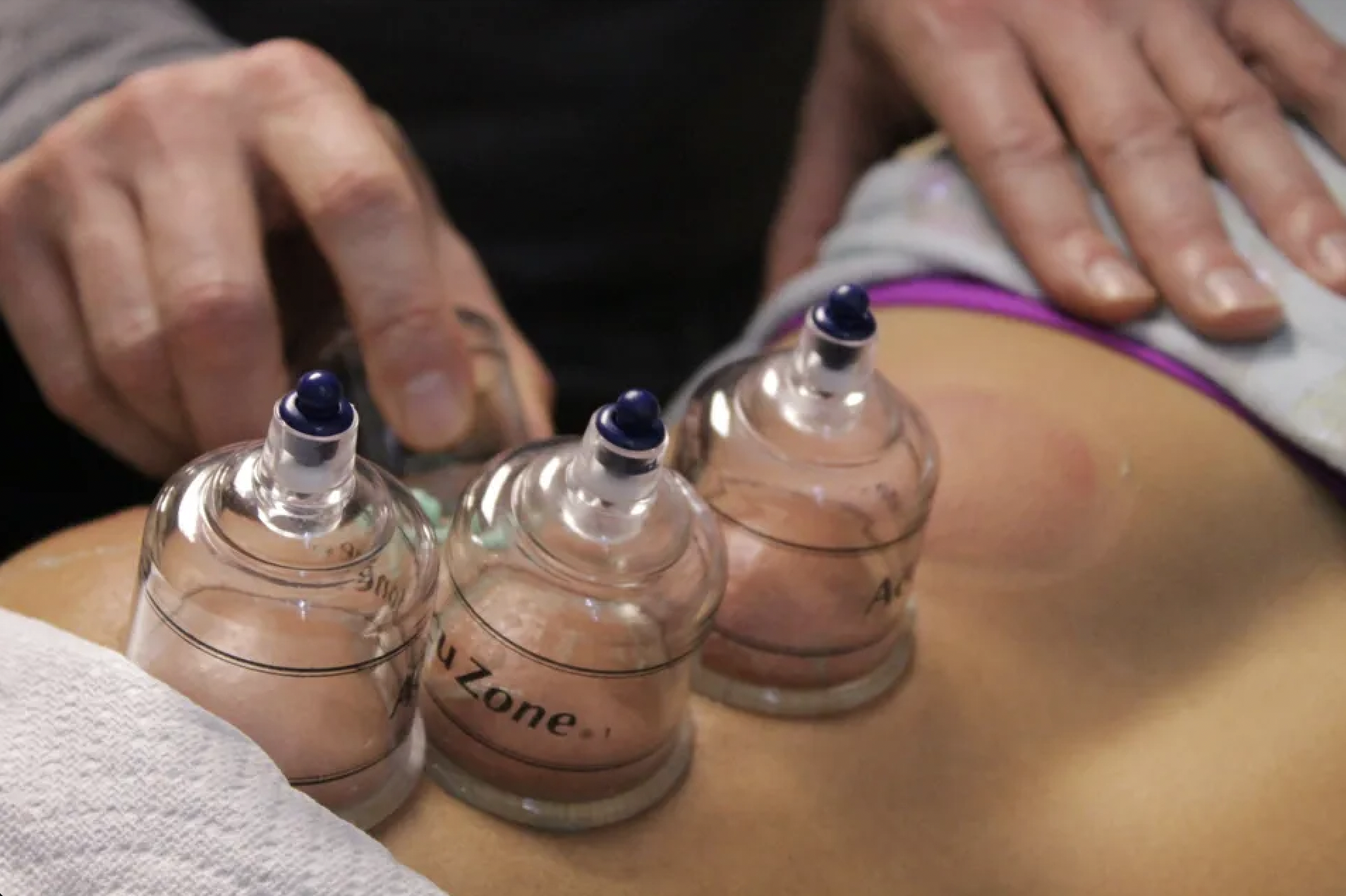Cupping: The Key to Unlocking Stubborn Tension
When fascia becomes too stiff or dry due to factors such as dehydration or chronic inflammation, the space between the fascia and the muscles begins to tighten, the lubricating fluid between the tissues decreases, and the resulting increase of friction can produce restriction and pain.
Cupping (also known as myofascial decompression) uses suction cups to pull the skin and superficial tissues upward allowing more space for the restricted muscles and fascia. In doing so, cupping decreases the friction between the underlying tissues. In addition, the region underneath the cups receives an increase of blood flow, which helps to rehydrate the tissue and creates a healing response from the cells in the area.
Modern cupping was initially a popular tool for elite athletes, such as Olympic swimmer Michael Phelps, and it has started to gain recognition as a powerful modality for reducing pain and increasing range of motion quickly.
Cupping with Dr. Ben
At Rehab Lab, I use cupping as a normal treatment method for many conditions such as:
Back pain
Neck and shoulder pain
Headache or migraine
Knee pain
Muscle strain or soreness
Decreased range of motion
My patients typically see benefits of decreased pain and increased range of motion immediately after cupping. Cupping is particularly valuable when the pain generator is myofascial (muscle or fascia).
Cupping originated in Eastern medicine. There are many different cupping strategies utilized in the healthcare field. I do not do “wet cupping” and you will not see me light a match to get the cups active. Instead I use a simple hand pump to create the appropriate suction.
I use two primary methods when cupping:
Static Cupping - The patient rests with the cups on the site of pain
Motion Cupping - I have the patient stretch and move while the cups are attached
Both strategies operate to increase blood flow, increase mobility and decrease pain.
Decompression is the opposite of massage, where one uses hands/tools to compress the tissue. While cupping and massage both work to increase blood flow and decrease friction, it is useful to be able to engage the body with different mechanisms. A body that is not responding to the compression of massage, may respond well to the decompression of cupping. I’ve found this to be particularly true with stubborn areas of tension. In cases that need extra focus, I’ll locate the region of tension, cup the area, then follow up with myofascial release (massage). The decompression of cupping acts to unlock the tissue, making the compression of massage more effective. If you feel like you’ve been hammering the same areas over and over with no genuine relief, my cupping strategy may be the key to unlocking that stubborn tension.
Cupping is a valuable tool that can help break the cycle of pain and allow your body to move better. Schedule a treatment session and ask me about cupping today!
Checkout the scientific research on Cupping:
“The Medical Perspective of Cupping Therapy: Effects and Mechanisms of Action.” Journal of Traditional and Complementary Medicine , Elsevier, 30 Apr. 2018, www.sciencedirect.com/science/article/pii/S2225411018300191.
Bridgett, Rhianna, et al. “Effects of Cupping Therapy in Amateur and Professional Athletes: Systematic Review of Randomized Controlled Trials.”Journal of Alternative and Complementary Medicine (New York, N.Y.), U.S. National Library of Medicine, Mar. 2018, www.ncbi.nlm.nih.gov/pubmed/29185802.
DaPrato, Chris. “Effects of Soft Tissue Mobilization With Negative Pressure Device on the Shoulder, Using MR Imaging.” https://www.cuptherapy.com/_files/ugd/12c814_558b4c9db9d544f88479a277f3b32e1c.pdf

